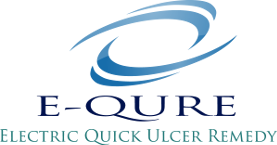Electrotherapies
Electrical flow in the body plays a significant role in many physiological and pathophysiological conditions (health and disease).
Electrotherapy is the use of electrical energy in the treatment of impairments of health and conditions of abnormal functioning. In medicine, the term electrotherapy refers to a variety of treatments, including the use of electrical devices such as deep brain stimulators for neurological disease. Electrotherapy has also been applied specifically with the use of electrical current to:
Medical Uses
Electrotherapy is a non-invasive form of treatment used in many medical applications *3:
- Pain relief (acute, chronic and intractable)
- Muscle stimulation, relaxation, rehabilitation and re-education
- Blood flow enhancement
- Reduction of swelling and inflammation
- Drug delivery
- Tissue regeneration
- Wound healing
The recent (September 2009) international pressure ulcer guidelines (EPUAP and NPUAP) rated electrical stimulation as the only treatment for pressure ulcers with highest strength of evidence A *4.
Types of Electrotherapies
Electrotherapy is performed using devices that not only vary in size but also in applications. These devices may vary in terms of waveform, frequency and effect. The specific device used often depends on the type of electrotherapy being administered. Currently, there are several types of electrotherapy, including:
- Transcutaneous Electrical Stimulation (TENS)
- Galvanic Stimulation (GS)
- Percutaneous Electrical Stimulation (PENS)
- Neuromuscular Electrical Stimulation (NMES)
- Interferential Current therapy (IC)
- Microcurrent therapy (less than 1mA)
- Electro Acupuncture (EA)
- Spinal Cord Stimulation (SCS)
- Transcutaneous Spinal Electroanalgesia (TSE)
- Pulsed Short-Wave Diathermy (PSWD).
Electrotherapy in Wound Healing
The use of electrotherapy (electrical stimulation) as an adjunct treatment for chronic wounds such as diabetic foot ulcers, venous or arterial leg ulcers and pressure ulcers has been reported by numerous studies.
- The rationale for applying electrical stimulation to chronic non-healing wounds is that it mimics the natural current of injury and will jump start or accelerate the wound healing process.
- Indeed the recent (September 2009) international pressure ulcer guidelines (EPUAP and NPUAP) rated electrical stimulation as the only treatment for pressure ulcers with highest strength of evidence A 4.
Electrotherapies In Wound Healing
| Clinical Evidence | Biological Evidence |
|
|
E-QURE BST – Electrotherapy Device
E-QURE's Bioelectrical Signal Therapy (BST)TM - The non-invasive BST electrical transmission Device mimics the naturally occurring pulses of healing wounds (“normal wounds”) and creates an electric induction field around the hard-to-heal wound, which accelerates the healing rate. The BST Device transmits the signals through a single stimulation channel to a pair of surface electrodes affixed around opposing sides of the ulcer and is completely non-invasive painless and easy to use.
E-QURE's BST(Bioelectrical Signal Therapy) Device - treats and cures chronic wounds such as:
- Pressure ulcers
- Diabetic foot ulcers
- Venous Stasis ulcers
- Hard to heal ulcers
References
- Gardner, S.E., Frnatz, R.A., Schmidt, F.L. Effect of electrical stimulation on chronic wound healing: a meta-analysis. Wound Rep Reg 1999; 7: 495-503.
- Kloth, L. Electrical stimulation for wound healing: a review of evidence from in vitro studies, animal experiments, and clinical trials. Int J Low Extrem Wounds 2005; 4: 1, 23-44.
- Ayon kay John Low,Ann Reed. Electrotherapy explained: principles and practice. "Electrotherapy Explained: Principles and Practice"
- NP UAP –EP UAP Guidelines for Pressure Ulcer Prevention and Treatment.www.npuap.com and www.epuap.com. 2009.
- Wolcott, L.E., Wheeler, P.C., Hardwicke, H.M., Rowley, B.A. Accelerated healing of skin ulcer by electrotherapy: preliminary clinical results. South Med J 1969; 62: 7, 795-801.
- Carley, P.J., Wainapel, S.F. Electrotherapy for acceleration of wound healing: low intensity direct current. Arch Phys Med Rehabil 1985; 66: 7, 443-446.
- Gardner, S.E., Frantz, R. A., Schmidt, F.L. Effect of electrical stimulation on chronic wound healing: a meta-analysis. Wound Rep Reg 1999; 7: 495-503.
- Kloth, L. Electrical stimulation for wound healing: a review of evidence from in vitro studies, animal experiments, and clinical trials. Int J Low Extreme Wounds 2005; 4: 1, 23-44.
- Ohry, A., Goren, O. The effects of BST electrostimulation on healing of pressure ulcers: results of a multi-center, double blind, 1. randomized, placebo controlled study. EWMA J 2007; 7: oral abstract no. 66.
- Ricci, E., Afargan, M. The effect of stochastic electrical noise on hard-to-heal wounds. J Wound Care, 2010; 19 (3):96-103.
